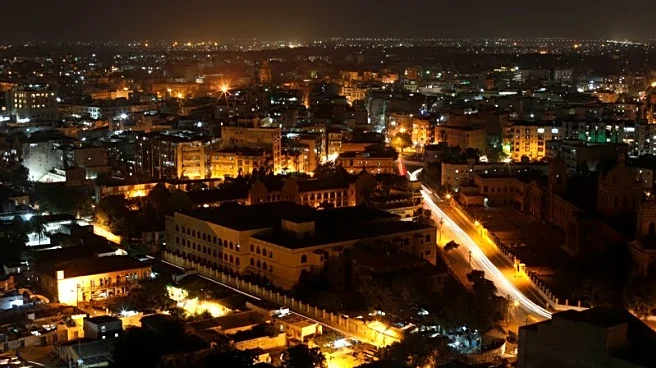What's Happening?
A recent survey conducted by the Sindh Labour Department in partnership with UNICEF has revealed that approximately 1.3 million children aged between five and 17 are engaged in child labour in Sindh, Pakistan.
The survey, officially launched on Friday, highlights that 65% of these children are working in the agriculture sector. The survey also indicates a significant decrease in child labour incidence since 1996, when it was recorded at 20.6%. Currently, 10.3% of children in the province are involved in child labour, with a notable gender disparity: 13.7% of boys and 6.6% of girls. The survey further reveals that 44.3% of parents allow their children to work to support family income, and 43.5% of working children report experiencing fatigue or injuries due to work-related tasks.
Why It's Important?
The findings of the Sindh Child Labour Survey underscore the persistent issue of child labour in Pakistan, particularly in the agriculture sector. This situation poses significant challenges to the children's health, education, and overall development. The survey's results highlight the need for targeted interventions to reduce child labour and improve the living conditions of affected families. The data also points to economic disparities, with higher rates of child labour in poorer households, emphasizing the need for economic support and educational opportunities. Addressing these issues is crucial for the social and economic development of the region and for ensuring the rights and well-being of children.
What's Next?
The survey's findings may prompt further action from the Sindh Labour Department and UNICEF to develop strategies aimed at reducing child labour. Potential steps could include increasing educational access for working children, providing economic support to families, and implementing stricter regulations to protect children from hazardous work conditions. Additionally, advocacy and awareness campaigns may be launched to address the root causes of child labour and promote children's rights. Stakeholders, including government agencies, NGOs, and community leaders, are likely to play a critical role in these efforts.
Beyond the Headlines
The survey highlights deeper socio-economic issues, such as poverty and lack of access to education, which contribute to child labour. Addressing these underlying factors requires a comprehensive approach that includes policy reforms, community engagement, and international cooperation. The ethical implications of child labour, particularly in hazardous conditions, call for urgent attention to ensure children's rights are upheld. Long-term shifts may include increased focus on sustainable development and poverty alleviation to prevent child labour.












